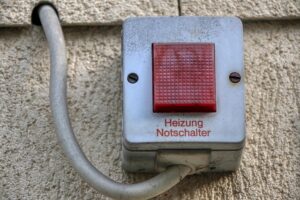Commercial air curtain heaters are revolutionizing indoor climate control, offering energy-efficient and effective temperature management in spaces like warehouses and retail stores. However, identifying these heaters from diverse brands and models is challenging due to varying naming conventions and regional differences. A strategic approach involving standardized naming, integration of keywords like "heated air curtains" and "industrial air barriers", and emphasis on energy efficiency can enhance searchability and appeal to environmentally conscious businesses. Advanced entity recognition technologies powered by natural language processing algorithms streamline tagging processes, ensuring accurate identification and categorizing these heaters for improved inventory management and targeted marketing strategies.
“Uncovering the intricacies of commercial air curtain heaters is essential for optimizing indoor environments. These innovative devices play a pivotal role in climate control, but identifying their specific models accurately presents challenges. This article delves into the complexities of entity recognition in commercial air curtain heater names, exploring strategies to enhance model tagging. We discuss the impact of improved entity recognition, offering solutions to streamline data management and decision-making for these advanced heating systems.”
- Understanding Commercial Air Curtain Heaters and Their Importance
- Challenges in Accurate Entity Recognition for Heater Models
- Effective Strategies for Tagging Heater Names
- Implementation and Benefits of Improved Entity Recognition
Understanding Commercial Air Curtain Heaters and Their Importance

Commercial air curtain heaters play a pivotal role in managing indoor environments, especially at commercial entrances and doors. These innovative devices utilise advanced air curtain technology to create an industrial air barrier, effectively controlling the flow of outside air and temperature. By integrating heated air curtains into commercial spaces like warehouses, retail stores, and entrance areas, businesses can achieve optimal comfort and energy efficiency.
The importance of these systems lies in their ability to enhance door heating systems, making them more than just functional—they become essential components of overall climate control. Commercial entrance heating solutions, thanks to air curtain technology, offer a range of benefits including reduced energy consumption, improved indoor air quality, and enhanced customer experience. This is particularly beneficial for retail stores and other businesses where maintaining a comfortable environment can significantly impact customer satisfaction and sales.
Challenges in Accurate Entity Recognition for Heater Models

Accurately recognizing and tagging commercial air curtain heater models present several challenges. One of the primary difficulties lies in the vast number of varying brands, models, and configurations available on the market. Each manufacturer often employs unique naming conventions and product codes, making it a complex task to develop an algorithm that can consistently interpret these names. Moreover, the integration of multiple languages and regional variations adds another layer of complexity, as different markets may have specific terms for similar heater types.
Furthermore, commercial air curtain heaters are designed with diverse applications in mind, catering to various industries such as retail stores, warehouses, and industrial facilities. This diversity results in a wide range of product features, specifications, and performance metrics. Ensuring that the entity recognition system can capture these nuances and differentiate between similar models within different door heating systems is crucial for precise classification. Additionally, keeping up with new model releases and discontinuations requires constant updates to the recognition tags to maintain accuracy over time.
Effective Strategies for Tagging Heater Names

Accurately tagging commercial air curtain heater models is a multifaceted task that requires strategic approaches to ensure precision and consistency. The first step involves standardizing naming conventions across different brands and models, leveraging existing data and industry standards where available. This standardization helps in avoiding ambiguous or contradictory tags, which can lead to misidentification later.
Implementing air curtain technology-specific keywords such as “heated air curtains” and “industrial air barriers” within the tagging system is another effective strategy. Integrating these terms enhances searchability and makes it easier for users to filter and find specific models suited for their commercial entrance heating, door heating systems, or warehouse entrance heating needs. Moreover, focusing on energy efficient heating solutions by highlighting models with advanced energy-saving features can appeal to environmentally conscious businesses, fostering a more sustainable approach to retail store heating.
Implementation and Benefits of Improved Entity Recognition

Improved entity recognition technologies play a pivotal role in enhancing the accuracy and efficiency of commercial air curtain heater models’ tagging processes. By employing advanced natural language processing algorithms, these systems can meticulously analyze vast datasets containing various brand names, model numbers, and specifications of these heaters. This not only speeds up product categorization but also ensures minimal errors, especially when dealing with intricate product names that often include technical details or unique identifiers.
The implementation of robust entity recognition offers several benefits for businesses in the commercial heating sector. For instance, it enables precise identification of different door heating systems and air curtain technologies, facilitating efficient inventory management and targeted marketing strategies. Moreover, energy-efficient heating solutions can be easily categorized based on their performance and environmental impact, allowing retailers to promote sustainable practices. This level of detail is crucial for industrial applications like warehouse entrance heating or retail store climate control, where specific requirements demand tailored solutions.
Accurately identifying and tagging commercial air curtain heater models is a significant step forward in enhancing data organization and accessibility within this industry. By overcoming challenges through effective strategies, as discussed, improved entity recognition brings numerous benefits. It enables better categorization, simplifies search processes, and facilitates informed decision-making for businesses dealing with diverse heater models. This advanced approach paves the way for more efficient inventory management and customer support in the commercial heating sector.






